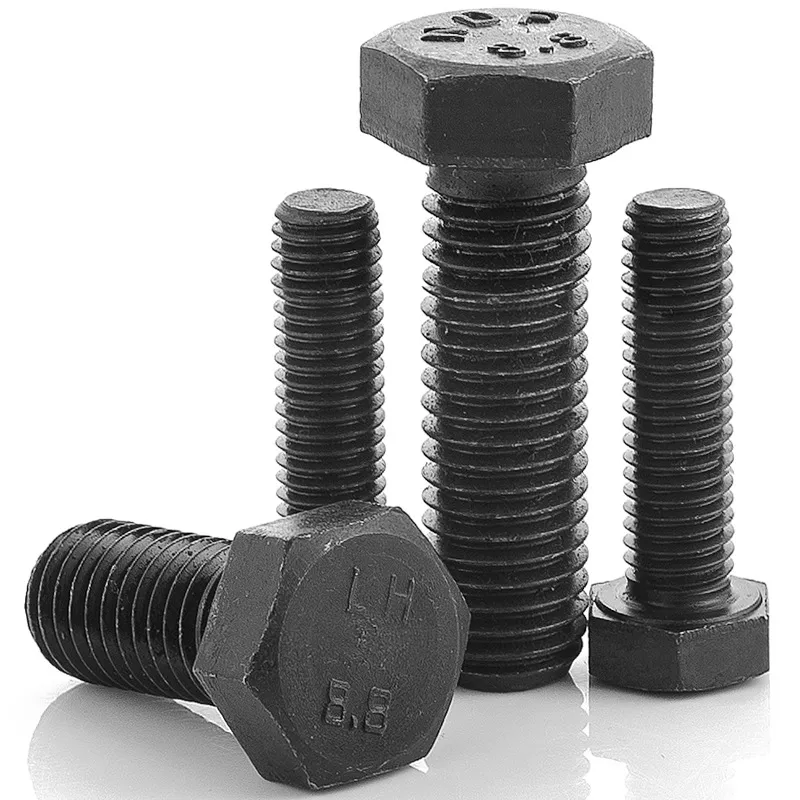

Choosing the Right Thin Stainless Steel Flat Washers for Your Projects
Des . 10, 2024 18:33 Back to list
Choosing the Right Thin Stainless Steel Flat Washers for Your Projects
The Importance of Thin Stainless Steel Flat Washers in Various Applications
When it comes to fastening and securing components in machinery, construction, and other engineering applications, the role of washers cannot be overlooked. Among the various types of washers available, thin stainless steel flat washers play a critical role due to their unique properties and advantages. This article explores the significance, benefits, and applications of thin stainless steel flat washers.
What are Thin Stainless Steel Flat Washers?
Thin stainless steel flat washers are circular disc-like components made from stainless steel, specifically designed to be placed between a fastener (such as a bolt or nut) and the surface of the material to which it is being fastened. Their thin profile allows them to fit into tight spaces while still providing a stable base for the fastener. These washers are crafted to resist corrosion, making them suitable for use in various environments, including outdoor and marine applications.
Benefits of Thin Stainless Steel Flat Washers
1. Corrosion Resistance One of the primary advantages of stainless steel is its resistance to rust and corrosion. This makes thin stainless steel flat washers particularly suitable for harsh environments where moisture, chemicals, or temperature fluctuations might cause other materials to fail.
2. Strength and Durability Stainless steel has a high tensile strength, allowing thin washers to maintain their shape and integrity even under high load conditions. This durability ensures a secure connection over time, reducing the risk of loosening or failure.
3. Uniform Load Distribution By providing a larger surface area for the bolt or nut to rest on, flat washers help distribute the load more evenly across the surface. This can prevent damage to softer materials and minimize the risk of wear and tear.
4. Reduced Friction The smooth surface of stainless steel flat washers reduces friction between the fastener and the surface material. This minimizes the risk of galling, a wear mechanism that can occur with certain metals when they come into contact with one another.
5. Aesthetic Appeal The shiny finish of stainless steel not only provides a functional purpose but also enhances the visual appeal of the assembly. This is particularly important in applications where the visual presentation is considered, such as in architectural designs or consumer products.
thin stainless steel flat washers

Applications of Thin Stainless Steel Flat Washers
Thin stainless steel flat washers find application across a wide array of industries, including but not limited to
1. Construction and Manufacturing In building and manufacturing projects, these washers help secure structural elements, ensuring durability and stability.
2. Automotive Industry Used in various automotive components, these washers play a critical role in ensuring that parts remain securely fastened, thus enhancing vehicle safety.
3. Marine Applications Due to their resistance to corrosion, thin stainless steel flat washers are ideal for boat manufacturing and maintenance, as they withstand the harsh marine environment.
4. Home Appliances Many household appliances incorporate these washers to ensure reliable performance and longevity. They help to secure bolts and prevent damage to surfaces.
5. Electronics The design of electronic devices often requires the use of thin washers in assembling components, where limited space is a concern.
Conclusion
In summary, thin stainless steel flat washers are integral components in a wide range of applications due to their strength, durability, and ability to prevent rust and corrosion. Their use contributes to the overall reliability and longevity of products in various industries, making them essential for engineers, manufacturers, and DIY enthusiasts alike. As technology and engineering practices continue to evolve, the importance of high-quality materials such as thin stainless steel flat washers will remain crucial in achieving optimal performance in every application. By choosing the right washers for specific tasks, one can ensure that fasteners perform effectively and efficiently, ultimately leading to safer and more reliable structures and devices.
Latest news
-
Hot Dip Galvanized Bolts-LongZe|Corrosion Resistance&Customization
NewsAug.02,2025
-
High-Strength Hot Dip Galvanized Bolts - LongZe Metal Products|Corrosion Resistant, Industrial Grade
NewsAug.02,2025
-
Hot-Dip Galvanized Hex Bolts - LongZe|Corrosion Resistance&Industrial Applications
NewsAug.02,2025
-
Premium Self Tapping Metal Screws: Strong & Easy Install
NewsAug.02,2025
-
Premium Fasteners Manufacturer | AI-Driven Solutions
NewsAug.01,2025
-
Hot Dip Galvanized Bolts - Hebei Longze | High Strength, Corrosion Resistance
NewsAug.01,2025

